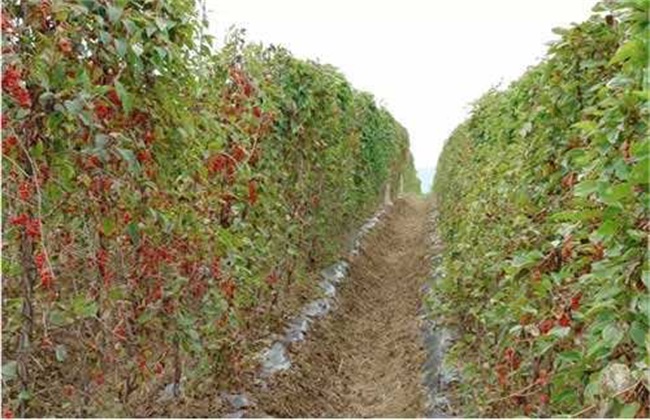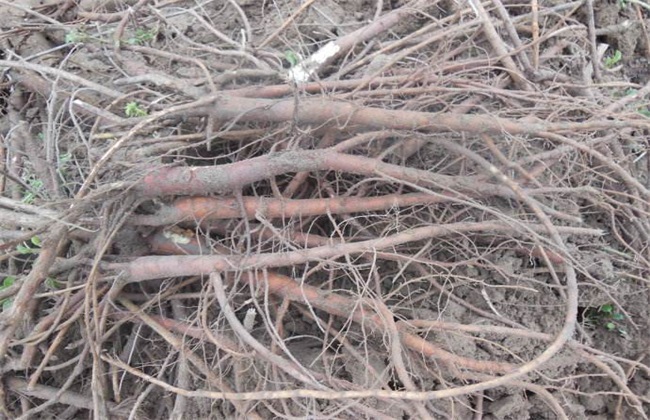High yield pruning techniques of Schisandra chinensis
Schisandra chinensis is a kind of traditional Chinese medicine with a long history in China, which has a large planting area in our country. The annual consumption of Schisandra chinensis is relatively large, so more and more people plant it, and the demand for output is naturally higher and higher. When planting Schisandra chinensis, if you want to increase the yield, then pruning is indispensable. So how to plant Schisandra chinensis? Let's take a look at it with the editor.

1. Fixed dry
The growth of Schisandra chinensis seedlings is relatively strong in the summer after planting, so we should pay attention to retain about 3 lateral vines for stem-drawing work. Each seedling has two bamboo poles, and each bamboo pole retains about two main vines. When all the main vines grow to about 50cm, hit the tip and do the work. Promote the growth of short fruit branches when the young branches grow to about 30cm. Then choose a growth building as the extension branch. Other secondary shoots are tapped around the 20cm to increase the amount of flowers and fruits.
2. Shearing
Schisandra chinensis is a monoecious crop, so the annual flowering rate of female flowers directly affects the yield. Therefore, when we plant, we should prune properly, improve the permeability of the shelf surface, enhance the photosynthesis of leaves, and increase the number of female flowers. In early spring, when the sap begins to flow, keep the extended main vine of the previous year around 30cm, cut off the excess, and cut the secondary shoot to about 20cm. When the new secondary shoot at the cutting point grows to about 20cm, a secondary shoot is selected without tapping treatment as a delayed branch treatment to promote the robust growth of the main vine and improve the quality and quantity of flower buds of the secondary shoot.
3. Circular update
When the fruit of Schisandra chinensis is large, as well as when the sap flows in early spring, pay attention to cutting all short fruit branches to about 12 cm. Then during the flowering and fruiting stage, new short fruit branches are sent out at the place where the base meets the main vine. Then choose a good robust position as the fruit branch of the second year. Remove the excess branches and pay attention to cutting off the old fruiting branches in time when pruning in the second year. The use of new fruit branches, and then every year to carry out the cycle of fruit branch renewal, in order to effectively increase the yield.
4. Pruning method
The pruning of Schisandra chinensis should be carried out properly in every season. In spring pruning, short fruit branches and old withered branches should be cut off. Long fruit branches retain about 10 buds, and then properly dense to avoid interfering with each other's growth. Then summer pruning is carried out from June to July, cutting off the inner bore branches, over-dense branches and so on, even if the new branches grow too dense, we should pay attention to timely pruning. Then keep about 3 strong branches in autumn and cut off the excess basal branches, usually after defoliation. Finally, winter shears are carried out before the beginning of winter to help Schisandra successfully survive the winter.
The above is a brief introduction of Schisandra chinensis pruning technology. The pruning work of Schisandra chinensis is directly related to the yield, so we must pay more attention to it when planting. That's all for today's introduction. This article is for reference only. Thank you for your reading and support.
Related
- Fuxing push coffee new agricultural production and marketing class: lack of small-scale processing plants
- Jujube rice field leisure farm deep ploughing Yilan for five years to create a space for organic food and play
- Nongyu Farm-A trial of organic papaya for brave women with advanced technology
- Four points for attention in the prevention and control of diseases and insect pests of edible fungi
- How to add nutrient solution to Edible Fungi
- Is there any good way to control edible fungus mites?
- Open Inoculation Technology of Edible Fungi
- Is there any clever way to use fertilizer for edible fungus in winter?
- What agents are used to kill the pathogens of edible fungi in the mushroom shed?
- Rapid drying of Edible Fungi



